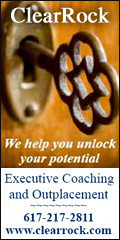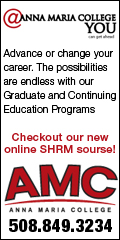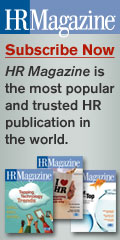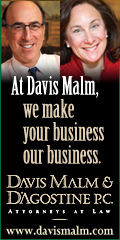Resources and Water Operations Can’t Afford to Mis-Hire! Seven Tips to Hiring Right the First Time
 Print this Article | Send to Colleague Print this Article | Send to Colleague
There are several steps to creating an
effective recruitment program:
- The first starts with the basics: the job
description. Many organizations only have job descriptions without
specific expectations spelled out. It’s very difficult to describe a
position to a candidate, without having it completely defined. It's
important to detail the expected job performance outcome, and be very specific
in what is needed and expected. The job description should have 30-, 60-,
90- and 180-day objectives, so the candidate has a clear understanding what is
expected for the job. Be sure to review and update job descriptions
regularly, as organization needs and expectations for a position are bound to
change.
- The next step is to define where to recruit
candidates or target your recruiting process. Now that you have an
idea of what you need and expect for the position, where do you find this
treasured person? There are many resources: Referrals, recruiters,
newspaper ads, college placement centers, .com listings, etc. Referrals
are usually one of the best sources for candidates and giving out the job
description to business associates and friends may reveal the perfect
candidate. When working with recruiters, it is very important to be
as specific as possible to avoid your time being wasted with unqualified
candidates. According to Arnie Winkler of the Northwest Public Power
Association, "Organizations must be
specific in understanding what they want in technical competency, cultural
fit and behavioral characteristics." The same is true for ads so that the
ad is as definitive as possible. College placement centers are not
only good for recruiting college grads, but usually have facilities to
list positions that require extensive experience too. They can be
especially helpful if they are in close contact with the alumni
association.
- Soon in your hiring process, you will be faced
with a big pile of resumes. Look for resumes that are specific to your
needs and notice the presentation style, which will tell you a great deal about
the candidate. It is helpful to decide what the priorities are for the
position and look for those first in the resumes.
- Once you have settled on a few resumes, we
suggest the two step approach to interviewing. The first is the telephone
interview, which can save you valuable time and effort. Ask the candidate
a set of specific questions, such as: Why are you interested in this
position? Please describe three key attributes that you have to offer to
our company? Give me one significant program that you had an impact on in
the last six months? Listen carefully to the candidate to see if the
response fits the job description. This process allows the candidate to
earn a face-to-face interview.
- When interviewing in person, it is important to
listen and not let emotions take over. The candidate should talk about 80
percent of the interview and the interviewer only 20 percent. The goal
for interviewing effectively is to note their thinking patterns, and not get
caught up in appearances, impressive schools or companies. During the
interview, questions that are more specific are helpful in making successful
hiring decisions. Some examples are: What significant impact have they
had at three or more companies on their resumes - ask for specifics, percentage
of change; Please describe in detail what brought about the change; What was
their process, from A to Z?and ask how the candidate would handle a
specific problem that you have seen in the position.
- Once a candidate has been selected to be hired,
then the most difficult part of the hiring process begins: reference
checking. Many firms find professional organizations helpful when making
background checks.
- Yet, as the old saying goes, "You never know someone until you work
with them, travel with them or live with them." Through in-depth work
style and personality testing, you can reduce the possibility of making a
hiring error. An in-depth assessment can
be like a MRI to identify inner traits of a candidate if the appropriate
assessment is selected.
When researching profiles, here are some things to
keep in mind:
- Training or degrees required for interpretation of the
data. Weekend training programs can be
problematic since testing and human behavior is a very complex subject. When making hiring or internal decisions,
organizations need as much understanding as possible as the consequences can be
very costly.
- A copy of the
resume should be supplied to the testing company to review when discussing the
assessment results. We suggest to make
sure that they require this as part of the process so it is used when reviewing
the assessment results.
- Scale for "Impression Management" to understanding accuracy
of results and if someone is trying to ‘fake good’. The questionnaire needs at a minimum of 164
questions to gather enough data for this scale.
- Number of studies conducted and there should be multiple
studies for validation purposes.
- How long has the profile been used—what is the history.
- How often is the normative database updated and where is
the data coming from. (For example, U.S. Census)
- Cultural bias – is it built into the profile and for which
countries.
- Does the profile meet U.S. government employment
standards? Has it been reviewed for ADA
compliance & gender, culture and racial bias?
- Reading level required (5th grade English, etc).
- Number of profiles administered.
- Number of actual primary scales as defined by the "Big 5"
testing standards. Many tests will claim to have more scales than they actually
have - this can lead to misrepresentation of data.
- Validity, reliability and basis.
A common inquiry from
companies and organizations is about the legal guidelines in providing
assessments to candidates. Since
industries vary, it is always best to check with a trade association or a legal
representative. The general rule is that
a test or any set of hiring questions needs to be administered to all final
candidates in order to assure that discrimination is not taking place. More information may be found at the EEOC
website, in the Disability-Related Inquiries and Medical Examinations of
Employees section:
http://www.eeoc.gov/policy/docs/guidance-inquiries.html#2
Another question is how
do new hires usually feel about taking an in-depth, work style assessments. It shows that a company is serious about who
they hire. If the company presents the
testing program as a method of assuring both parties that they are making the
right decision, the individual usually responds very well. The bottom line is that hopefully turnover is
greatly reduced.
In-depth
work style and personality assessments can be very helpful for personnel
development and succession planning. As a hiring tool, they can be used
to develop additional questions for interviewing and confirming the
interviewer's intuition that might be overlooked. This process
gains more reliable and accurate data in order to effectively manage
individuals to make hiring and personnel decisions a win-win for everyone.
As a
special gift... just click the following link and you will receive a list
of telephone and face to face interview questions:
http://www.lighthouseconsulting.com/Articles/KOTInterviewQ/signupform.php
If you are a hiring manager
and would like to see a sample of an in-depth work style and personality
assessment profile, please call or email us.
For more information, please contact Dana Borowka at Lighthouse
Consulting Services, LLC, (310) 453-6556, extension 403, or email at dana@lighthouseconsulting.com.
As you have seen, a successful hiring program requires
many components that work together to provide the needed information for
difficult personnel decisions. Combining a well-defined job description,
targeted recruiting and focused interviewing with an effective in-depth work
style and personality evaluation program, turns hiring into a profitable and
rewarding process.
Permission is needed
from Lighthouse Consulting Services to reproduce any portion provided in this
article. © 2012.
If you would
like additional information on this topic or others, please contact your Human
Resources department or Lighthouse Consulting Services LLC, 3130 Wilshire
Blvd., Suite 550, Santa Monica, CA 90403, (310) 453-6556, dana@lighthouseconsulting.com and our website: www.lighthouseconsulting.com.
Lighthouse
Consulting Services, LLC, provides a variety of services, including in-depth
work style assessments for new hires and staff development, team building,
interpersonal and communication training, career guidance and transition,
conflict management, workshops, and executive and employee coaching. To
order the book, "Cracking the Personality Code," please go to www.crackingthepersonalitycode.com.
|
|





